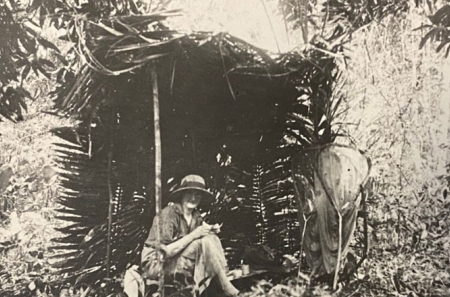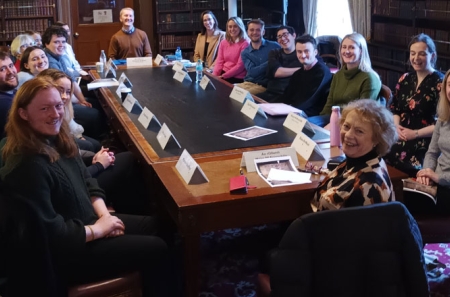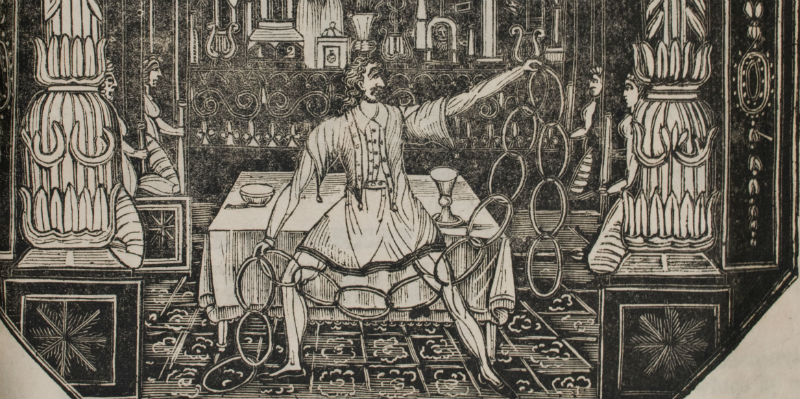
The business of leisure: entertainment ephemera in the collection of the Royal Irish Academy
27 August 2019For this month’s Library blog post Alison FitzGerald and Joy Sherwood of Maynooth University take a look at the weird and wonderful in popular entertainment of the eighteenth and nineteenth century.
The Royal Irish Academy’s collection of printed ephemera provides fascinating insights into the lively trade in popular entertainment in eighteenth- and nineteenth-century Ireland. Pamphlets and playbills in the collection record human and animal exhibits, displays of equestrian skill and mechanical ingenuity, menageries and giants, all part of the wide-ranging selection of commercial shows competing for public attention during this period. Many of these entertainments were provided by travelling showmen who had already toured London and provincial England. Others, like Marsden Haddock’s Androides, travelled outwards from Ireland on tour. Some of the advertising relies on captivating illustrations as part of its sales strategy; most of it deploys hyperbole and the language of wonder and spectacle in an attempt to draw the crowds.
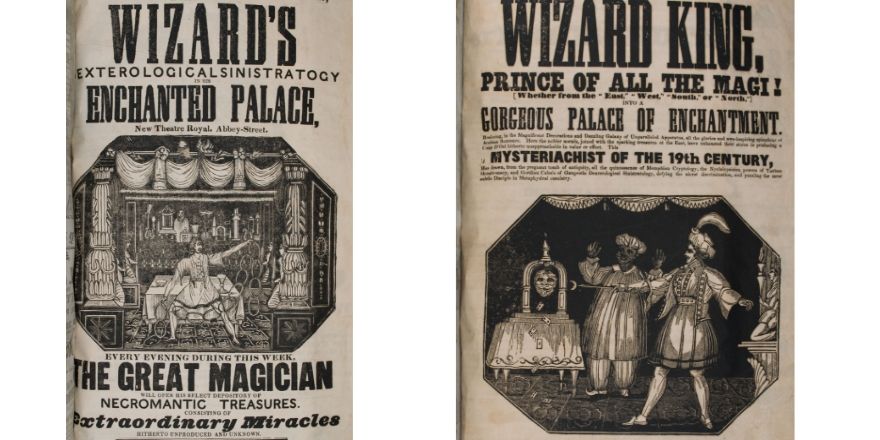
Theatre Royal Playbills, vol.1: 1796-1837 (SR 12 S 7)
A mid-nineteenth-century pamphlet outlining the exhibits in Mr. Garboldi’s Museum of Moving Figures is an excellent example. The show, which featured scenes of historical and architectural interest, included tableaux of Napoleon at the Battle of Marengo, The Temple of Minerva and The Ruins of Athens. Individual exhibits were animated (according to the pamphlet) with machinery which ‘surpasses imagination’. A scene of Androcles, a Runaway Roman Slave, the second exhibit in Garboldi’s Museum is singled out in the pamphlet for its ingenuity, ‘mechanised in the most minute manner’, with even the movement of the eyelids perceptible. The exhibition, mounted in Del Vecchio’s rooms on Westmoreland Street, Dublin, was clearly intended as a family show, its advertising couched in the language of education as well as entertainment. Admission was priced initially at sixpence for adults and threepence for children under the age of ten, but newspaper advertisements indicate that Garboldi dropped his prices at the end of the run, urging those who had not seen the show to ‘lose no time’, as he would not be returning to Dublin (Freeman’s Journal, 19 April 1840).
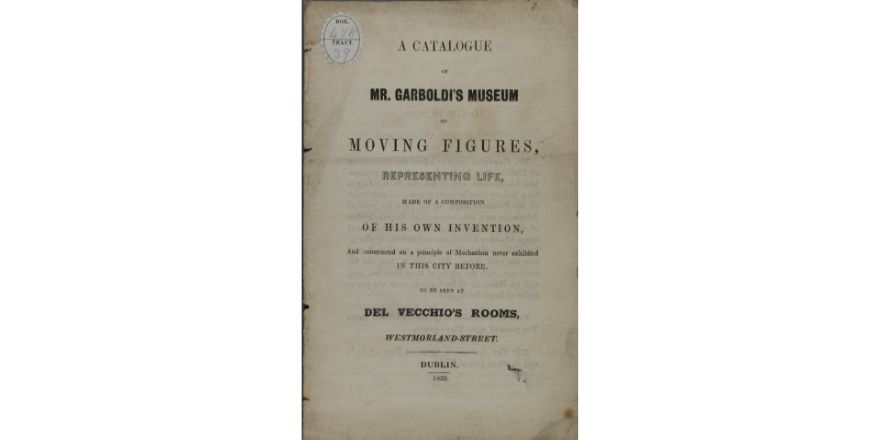
A catalogue of Mr. Garboldi's museum of moving figures ... Dublin, 1839 (HT (Box) 478/39)
Broadsides in the collection of the RIA are equally dazzling in their descriptions of circuses, magic acts, and equestrian displays, conjuring up a world of visual entertainment which must have been seductive to those with money to spend on leisure in Ireland during the eighteenth and nineteenth centuries. One from the same period as Garboldi’s Mechanical Museum details an eclectic programme including an English giant with ‘engaging manners’, an armadillo or ‘dog in armour’ and a female glass blower. These were presented with other ‘curiosities’ at 37 Nassau Street and billed as ‘Wonderful Phenomena of Nature’.
In many ways the nature of some of these shows is a world away from popular entertainment today. Nevertheless, the advertising rhetoric used to promote them is so vivid that the tenacity and ingenuity of their promoters remains impressive even in today’s media-saturated world. Exhibits like Garboldi’s Mechanical Museum also serve as a reminder that a fascination with smart technology is not solely a phenomenon of our times.
Alison FitzGerald and Joy Sherwood
Joy Sherwood is an undergraduate student at Maynooth University. She took part in MU’s experiential learning programme this summer (SPUR) and was mentored by Dr Alison FitzGerald of the Department of History, whose current research project Spectacles and Shows focuses on the material culture of entertainment in eighteenth- and nineteenth-century Ireland.

